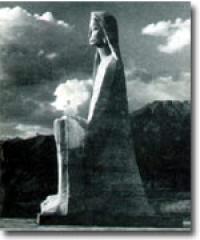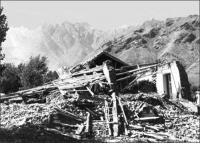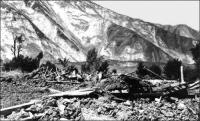You are here
Settlement Khait. 1949 and 1972.



Earthquakes in Tajikistan.
Earthquake-triggered landslides are a major geological hazard in Central Asia. In July 1949, the M7.4 Khait earthquake triggered many hundreds of landslides in a mountainous region near the southern limit of the Tien-Shan Mountains, central Tajikistan.
These landslides involved widespread rock-slope failure as well as large numbers of flowslides in loess that mantles the steep slopes of the region. In the Yasman valley hundreds of loess landslides coalesced to form a massive loess flow (est. vol. 245 Mm3) that travelled up to 20 km on a slope of only 2°.
In an adjacent valley, the Khait landslide involved transformation of an earthquake-triggered rockslide into a very rapid flow by the entrainment of saturated loess into its movement. It travelled 7.41 km over a vertical distance of 1421 m with an estimated average velocity of ~30 m/s.
We estimate its volume as 75 Mm3, an order of magnitude less that previously published estimates. The Khait landslide was simulated using DAN. The number of casualties due to earthquake-triggered landslides in the epicentral region was considerable.
Approximately 4000 people were killed in the Yasman valley loess flow as 20 villages (kishlaks) were overwhelmed. In the Khait landslide alone we estimate ca. 800 people lost their lives when the villages of Khait and Khisorak were overrun by rapidly moving debris.
Our data indicates that a total of approximately 7200 people were killed by earthquake-triggered landslides in the epicentral region of the Khait earthquake and that, in terms of loss of life, the 1949 Yasman valley loess flow was one of the most destructive landslides in recent history.
Authorship:
Now at Department of Earth Sciences, Simon Fraser University, 8888 University Drive, Burnaby, British Columbia, Canada V5A 1S6.







